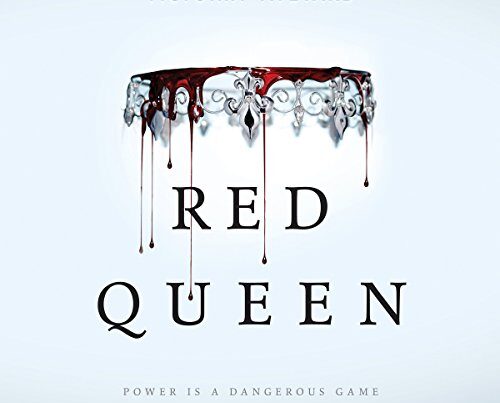Mary Beth Keane’s “Fever” audiobook tells the story of Typhoid Mary. It explores her life as a cook and disease carrier.
“Fever” by Mary Beth Keane delves into the life of Mary Mallon, infamously known as Typhoid Mary. This historical novel provides a gripping narrative of her journey, from her beginnings as an immigrant cook to her controversial role in spreading typhoid fever.
Keane’s meticulous research and vivid storytelling bring early 20th-century New York to life. The audiobook format adds another layer of immersion, making it a compelling listen. “Fever” not only highlights the human side of a notorious figure but also examines themes of public health, personal freedom, and societal judgment. This makes it a must-read for history enthusiasts and fiction lovers alike.

Introduction To Mary Beth Keane’s ‘fever’
Mary Beth Keane’s ‘Fever’ is an enthralling historical fiction. It dives deep into the life of Mary Mallon, famously known as Typhoid Mary. The audiobook brings a unique perspective to her story. It captures her struggles, resilience, and the societal challenges she faced. This post will explore key aspects of this gripping narrative.
The Historical Context Of ‘fever’
‘Fever’ is set in the early 20th century. This period was marked by rapid industrialization and urbanization. The rise of infectious diseases was a major public health concern. Mary Mallon, an Irish immigrant, became a symbol of these challenges. She worked as a cook in New York City. She was asymptomatic but spread typhoid fever to many families.
The story unfolds during a time of limited medical knowledge. Public health policies were in their infancy. Quarantine practices were harsh and often inhumane. The narrative vividly depicts these harsh realities. Keane’s portrayal of this era is both educational and captivating.
Key Themes Explored In The Audiobook
The audiobook ‘Fever’ delves into several profound themes:
- Isolation: Mary Mallon’s forced isolation is a central theme. She is treated as a pariah by society. This theme reflects the fear and stigma surrounding disease.
- Injustice: The story highlights the injustices faced by Mary. Her treatment by authorities raises ethical questions. It underscores the lack of empathy in public health policies of the time.
- Resilience: Despite her circumstances, Mary shows incredible resilience. Her determination to live a normal life is inspiring.
- Identity: The struggle for identity is another key theme. Mary grapples with her Irish immigrant identity and her role in society.
These themes make ‘Fever’ a rich and thought-provoking listen. It provides insights into the human condition and societal dynamics.
Characters And Plot Development
“Fever” by Mary Beth Keane is a captivating audiobook. It delves deep into the characters and plot. This section explores the development of the characters and the plot. The story revolves around Typhoid Mary and those around her.
Protagonist Typhoid Mary: A Character Study
Mary Mallon, known as Typhoid Mary, is the protagonist. She is a strong, complex character. Mary is an Irish immigrant working as a cook in New York. Despite being a carrier of typhoid, she shows resilience. Her story is about survival and denial.
Mary’s character is well-crafted. She is both sympathetic and controversial. Her stubbornness and determination stand out. Listeners get a glimpse into her tough life. The audiobook captures her struggles and emotions vividly.
Supporting Cast And Their Roles In The Narrative
The supporting cast in “Fever” adds depth to the story. Each character plays a crucial role in Mary’s life.
| Character | Role |
|---|---|
| Dr. Soper | The public health official who tracks Mary. |
| Alfred | Mary’s lover, who supports her. |
| Mr. Coleman | Mary’s employer who suspects her. |
Dr. Soper is a key figure. He is determined to stop the spread of typhoid. His interactions with Mary are intense. They showcase the clash between science and personal freedom.
Alfred provides emotional support to Mary. He is her anchor during tough times. Their relationship highlights the personal side of her ordeal.
Mr. Coleman adds tension to the plot. His suspicions about Mary create conflict. This conflict drives the narrative forward.
The supporting characters enrich the story. They help in understanding Mary’s world better. Their roles are vital in the plot development.
Impact And Reception Of ‘fever’
‘Fever’ by Mary Beth Keane is a gripping historical novel. It dives deep into the life of Typhoid Mary. The audiobook version has sparked significant attention. This section explores its impact and reception.
Critical Acclaim And Reader Responses
‘Fever’ has received high praise from critics. Many love the depth of its historical detail. The New York Times called it a “must-read”. NPR praised its compelling storytelling.
Readers also enjoyed ‘Fever’ immensely. They found it to be informative and engaging. On Goodreads, it has a high rating. Many reviews highlight its emotional impact and vivid characters. This audiobook adds a new layer to the experience.
| Source | Praise |
|---|---|
| The New York Times | “A must-read.” |
| NPR | “Compelling storytelling.” |
The Role Of Audiobooks In Experiencing Historical Fiction
Audiobooks provide a unique way to enjoy historical fiction. Narration adds a personal touch to the story. It can make history feel more alive.
With ‘Fever’, the audiobook format enhances the experience. The narrator’s voice brings Typhoid Mary to life. It helps listeners connect with her story on a deeper level.
Listening to the audiobook can be more immersive. It allows you to absorb the story while doing other tasks. This format suits busy lifestyles.
- Personal touch through narration
- Enhanced connection with characters
- Immersive experience
- Convenient for multitasking


Conclusion
Mary Beth Keane’s “Fever” audiobook offers a captivating journey into history. The narration breathes life into each character. This compelling tale of Typhoid Mary will leave listeners enthralled. Don’t miss experiencing this gripping story in audiobook form. Dive into “Fever” and immerse yourself in its rich, historical narrative.



